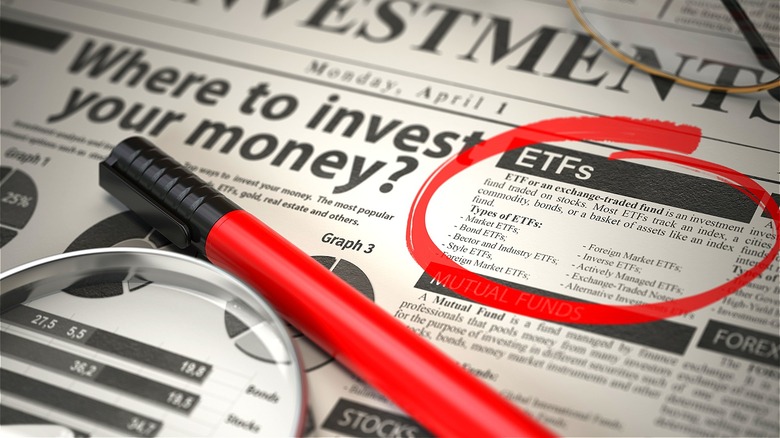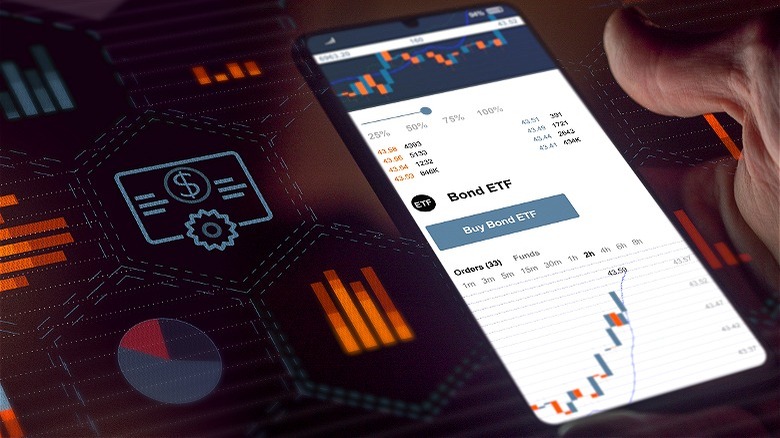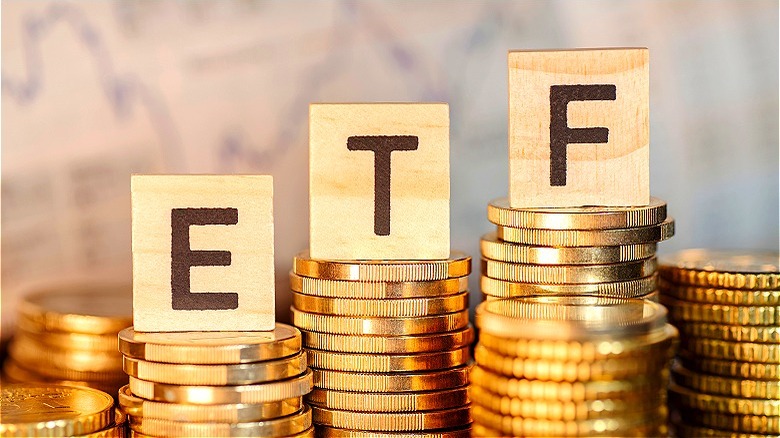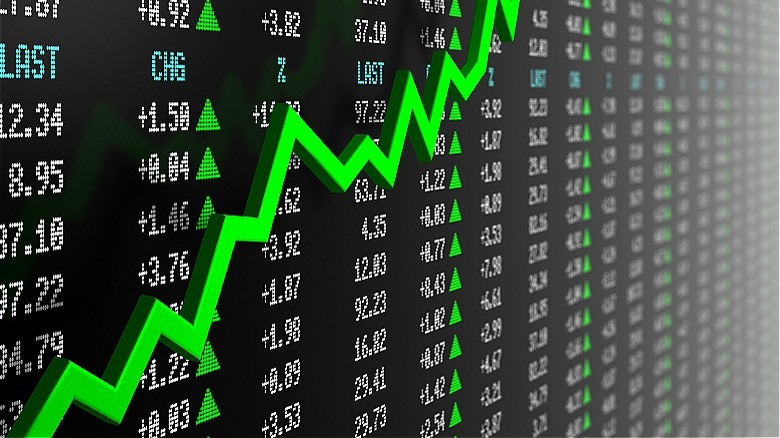What You Need To Know Before Investing In ETFs
ETFs (exchange-traded funds) are a type of investment many savers rely on as a primary means of growing wealth. ETFs exist in the stock market and can be traded like regular company stock assets, compounding wealth in the process. The financial instrument looks and behaves, to the untrained eye, as if it were a regular equity investment. But the reality couldn't be further from the truth.
Exchange-traded funds occupy a unique corner of the stock market, and they provide a wealth of benefits for any owners looking to tack on long-term portfolio appreciation. As is the case with any investment opportunity, the ETF marketplace isn't going to be for everyone and there are certainly a few drawbacks to a strategy that only prioritizes ETFs, forgoing individual investment in company stock altogether. But with the right balance, one or more ETFs can act as a major counterweight to help you guide your financial planning efforts in the right direction.
Indeed, ETFs have become a valuable commodity in both standard investment brokerage accounts and as a part of lengthier retirement-planning strategies. They are a versatile investment asset but it's important to understand where they excel and where their limitations lie before going all-in on an investment in this part of the marketplace.
ETFs trade like company stocks
An ETF exists in the stock market environment in virtually the same way that individual company stocks do. Unlike mutual funds, ETFs are traded throughout the day (rather than queued up as orders that execute after the market closes), and their prices fluctuate during each trading session just like individual stocks might. This makes ETFs an easily accessible commodity for many investors who are already trading in the stock market.
While the basics of ETF assets make them a user-friendly investment tool, it's important to note these aren't company stocks. Rather than a share corresponding to a slice of ownership in a specific company, an ETF is a pool of resources that combines tens, hundreds, even thousands of individual assets under the umbrella of one tradable commodity. A banking ETF might own shares in Chase, Bank of America, Goldman Sachs, Wells Fargo, and hundreds of other banks across America and perhaps even beyond it. Buying this hypothetical exchange-traded fund would grant you access to slivers of shares in each company the fund itself has bought into. Therefore, rather than purchasing individual shares in companies that you've researched, buying one share of an ETF offers wide-ranging market diversification in a single market order.
ETFs typically offer rock-bottom expense ratio costs
Expense ratios are a feature of index and fund investing. These are the charges associated with owning a fund that requires some kind of management. Whether actively or passively managed, an ETF isn't a static financial creature and requires rebalancing, human leadership, and other features that all cost money. An expense ratio is the charge that ETF owners pay to hold the fund and cover these costs. Exchange-traded funds generally cost less than mutual funds and other index type investments of this sort.
ETFs are commonly — but not always — passively managed and follow basic rules set up by the directing organization that initiated the fund. For instance, a technology ETF might stipulate certain percentages that cap investment in the largest corporations included in the sector. There might be specific rules surrounding the balance of FAANG stocks versus all other holdings, for example.
All this translates into a fund that tends to work out cheaper than similar options that might tout themselves in the same conversation. Expenses are something investors should always be wary of because any money coming out of your account is capital that can't be leveraged to coax new growth or create dividend earnings. Taking advantage of the lowest possible expense ratio you can find (while still buying into the investment parameters you're looking for) is always something that investors should prioritize.
ETFs are numerous
One major benefit that ETF assets have in their corner is their sheer number. There were 3,152 in January 2024, a number that's gradually ballooned since the tawdry 123 ETFs in existence some 20 years prior. With so many options available in the marketplace, it's only natural ETFs would cover virtually every square inch of the stock market. Investors can now find an ETF that tracks nearly any kind of investment imaginable — both company stock assets and beyond. The first ETF to hit the market was the SPDR S&P 500 ETF (SPY), launching in 1993. SPDR ETFs remain an active and highly valuable tool that investors routinely trade.
Exchange-traded fund assets that track cryptocurrencies, bond yields, gold (other precious metal volume), and even real estate (in the form of REIT ETFs), have led to a flourishing of this part of the investment marketplace. These assets make for a rich environment of stabilizing opportunities. For investors looking to dip their toes into a new space or others seeking to introduce a bit of stability to counterbalance a riskier stock buy, ETFs consistently pave the way forward. They've come to form the backbone of many successful investment strategies, regardless of the market sector or company size (mid-cap versus mega-cap companies, for instance) that any individual asset might track.
Active vs. passive fund management
Even though thousands of ETFs exist in the marketplace, not every one of them are created equal. No matter what kind of action you're looking for in an ETF, there are bound to be plenty of passive and active management strategies deployed in competing ETF assets. The difference will lie in who performs the primary management functions and rebalancing efforts in the fund's holdings and the balance sheet.
From time to time, every portfolio should be rebalanced. This means selling off overperforming stocks to crystallize profits and evaluating any underperforming ones for their potential to rebound versus the benefit of simply cutting losses and starting fresh with the capital. An actively managed fund might showcase a more aggressive and frequent rebalancing strategy, whereas a passive fund will simply track the fund with preset rules built into an algorithm that performs the management functions for shareholders.
Simply put, an active fund looks to outperform a target benchmark while a passive fund seeks to mimic one. Historically, both types perform in much the same way over the long term, meaning that the lower cost basis for passively managed funds drives investor profits higher when compared to actively managed ETFs, on average.
Stability with ETFs is undeniable
The only real drawback to ETF investing is the fact that increased stability and reduced risk largely translates into slower growth. When compared to individual stock-picking, experienced pickers who enjoy a good deal of luck alongside their knowledge and research can occasionally expect to see their gains outpace ETF growth. However, earnings like this are by no means the norm, with the opposite often true.
Enjoying solid growth requires a level of consistency that simply isn't sustainable for the long term. Professional stock-pickers rarely beat the market; what's more, they get worse at competing with it over lengthening time periods. Therefore, in order to try to best the market's own growth, you'll likely want to mix a blend of ETF holdings with individual stock selections for exposure to both features. General-purpose ETF assets, like an S&P 500 index or a Nasdaq fund, can lock in solid stability and quality growth over time. This knowledge that your assets are likely to perform very well over the long term gives you the ability to get a bit riskier with other stock-picking efforts.
It's important to remember that an exchange-traded fund containing hundreds of individual assets won't experience the full weight of growth among each individual company. If one brand explodes in value, individual stockholders will see far more benefit than ETF-based owners. Therefore, a mix of investment strategies is likely the best course of action when seeking a blended portfolio, one that incorporates both stability and risk structures.





